
Published February 7, 2024 by John Vondrak
Tags: CPU GPU Graphics Cards Cooling AMD Ryzen Threadripper Video Editing CAD / CAM AI, Deep Learning & Machine Learning Rackmounted Cloud
BOXX Top Ten Workstation Industry Trends in 2024
The workstation computer remains the primary tool for creators throughout a wide range of industries, most notably media & entertainment (M&E), manufacturing & product design (MPD), and architecture, engineering & construction (AEC). There are currently new technologies in play and even more on the horizon, so what new workstation trends can we expect in 2024? I’ve limited it to ten, so in the spirit of a top ten list, let’s begin with number one: AI.

GenAI
Generally speaking, both technical and non-technical organizations are interested in generative AI. So much so, in fact, that we can accurately refer to it as “mass interest.” To put that into better perspective, if it wasn’t for Taylor Swift, AI would have reigned as Time magazine’s Person of the Year.
While many think of AI as a cloud or server-based solution, there is a trend to utilizing workstations to build and test models. In addition, many are actively exploring options for more isolated models due to data security, mobility, or model specialization needs. In fact, many believe that significant future growth will be in localized models closer to the AI professional and user. “Foundation models do not have to be monolithic,” says NVIDIA AI researcher Jim Fan, who was not involved in the writing of this piece. “This work decomposes the complex task of embodied agent planning into three constituent models: a language reasoner, a visual world model, and an action planner. It makes a difficult decision-making problem more tractable and transparent.”
From Ansys, SOLIDWORKS , and Autodesk , to Adobe Creative Cloud and a long list of M&E applications, the embedding of AI into professional creative software will continue its march. These already compute-intensive systems will require even more capacity as the user attempts to take advantage of the AI offerings embedded within their mission critical professional software. In addition to professional software driving user level compute capacity, MIT Sloan Management Review predicts the democratization of AI led by “the rise of citizen data science, wherein quantitatively savvy businesspeople create models or algorithms themselves.” We predict these users will become increasingly demanding of their workstations as they adopt and become savvier AI builders and users.
Another trend to look for that may drive workstation demand are the challenges faced by AI professionals when they look to obtain necessary capacity in organizational shared/cloud resources to support designing, building, and testing new models, as well as the usual privacy and data confidentiality concerns. AI is obviously a hot commodity, and we have heard that everyone is competing for often scarce resources which results in days, weeks, or even months of delays in building, testing, and utilizing models. Who wants to wait when you have an AI concept that can save a company resource and potentially grow the top line?
What does this all mean for workstations? Local model development and testing, containment of highly confidential data used in those models, transportability in situations where the cloud is not accessible or shouldn’t be accessed, and (of course) the need for more GPUs inside workstations with AI-enabled professional software. In other words, there will be a need to upgrade GPUs in professional workstations or add more GPUs as users begin to access the AI features embedded in their applications.
Also, you can expect a need to procure workstations for local modeling by less technical users potentially using multiple MLOps and LLMOps vendors or NVIDIA AI Workbench expected in April (following a January beta release).
NVIDIA AI Workbench enables GenAI and deep-learning developers with easy GPU environment setup and the freedom to work and collaborate across various platforms regardless of skill level. It simplifies interactive development workflows while automating technical tasks that halt beginners and derail experts. Users can go directly from pretrained models to fine-tuning on their own resources.
For these applications, BOXX offers these unique hardware solutions .
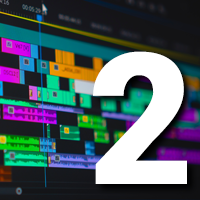 SMPTE 2110
SMPTE 2110
When employing different formats and higher resolutions, SMPTE 2110, a replacement for aging SDI, delivers increased flexibility, thereby transforming the broadcast and production industry.
TVBEurope notes: “And with higher-quality formats and greater bandwidth considerations comes the need for higher-end hardware, cabling, and other production tools, which can be costly. These emerging trends are overcoming those limitations by providing cost-effective, specialized solutions that can handle and produce UHD and HDR content without breaking the bank, while simultaneously future-proofing and extending the shelf life of premium assets.”
General trends also include baseband video over IP and NDI compressed video over IP. As for 2024, expect increased adoption like the recent adoption of the JPEG XS standard as a codec used with SMPTE 2110-22, in particular, the increased adoption of JPEG XS as a payload format within SMPTE 2110-22. Much of this is due to the cost of SMPTE 2110 which is lower than SDI.
NVIDIA Rivermax is the only fully-virtualized streaming solution that complies with the stringent timing and traffic flow requirements of the SMPTE ST 2110-21 specification. Rivermax also enables the future of cloud-based, software-defined broadcasting.
The key role of workstations is ground to ground communication rather than relying on the cloud. It also eliminates the need to purchase proprietary gateways. Another key factor: decreased reliance on proprietary equipment opens the door for configured workstations.
For this trend, BOXX rackmount systems like the RAXX P2G (ideal for streaming) and FLEXX P2G (the hardware foundation of BOXX Cloud) provide stellar performance either onsite or remotely.
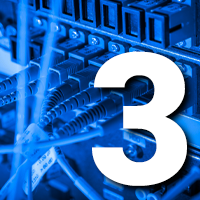 Remote Workstations
Remote Workstations
Qualtrics reports employees are 230% more engaged and 85% more likely to remain in a job longer than three years if they have the technology tools necessary to do their job. Meanwhile, a Zapier study concluded 1 in 6 employees left their jobs because the employer didn’t provide the proper technology tools. With that data in mind, understand that remote and hybrid work are here to stay and so is the need for remote workstations.
Cybersecurity challenges faced by organizations with a remote workforce include system patching, data proliferation, the cost of having remote AND local redundant systems, and the risk of remote system support. In addition, organizations have special collaboration needs across the remote workforce which require data availability via the cloud or shared environment.
In 2019, BOXX fortuitously launched an enterprise solution, FLEXX, designed for organizations with a remote team—before we knew how many would be forced to go remote just a mere 6-months later FLEXX was designed to be flexible to meet the specific needs of remote workers. We strive to avoid a one-size-fits all situation and allow organizations to size to a worker’s needs like a high performance system for the professional creator and perhaps a lower end system for administrators or managers. For examples, take a look at the solutions BOXX provided for civil engineering from TNP, Inc and the award-winning NYC architecture firm INC Architecture & Design. Some of our multiple FLEXX configuration options can be found here, while more information on our cloud offering can be found here .
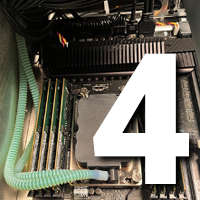 High Wattage CPUs and GPUs
High Wattage CPUs and GPUs
With this trend, you can also add high-quality power supplies, cables, and connectors to your list of items to assess as you choose your next workstation. With CPU/GPU power comes heat. At BOXX, we have writ large regarding the damage heat can do to a workstation, necessitating the need for liquid cooling, but you don’t have to take the heat diatribe from us this time. Nick Harris, CEO and co-founder of photonics computing specialist Lightmatter writes: “While many declare Moore's Law to be broken, or no longer valid, in reality it’s not the law that is broken but rather a heat problem. Heat created by the absence of sufficient energy reduction that was once provided for free at each new process node is the real problem.”
BOXX APEXX workstations and RAXX and FLEXX rack mounted systems are configurable with the latest high performance CPUs/GPUs, enterprise-class power supplies, cables, connectors, and yes, state-of-the-art liquid cooling to keep your system running at maximum capacity 24X7 if needed.
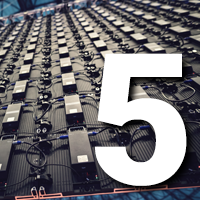 PCIe
PCIe
Large numbers of PCIe lanes improve performance by increasing data bandwidth between the motherboard and expansion cards, and as users require more GPUs, increased storage, and multiple peripherals, expect PCIe lanes to continue to multiply. If you haven’t reached PCIe 5.0 yet, look out. PCIe 6.0 is likely fast approaching.
Today’s high end workstations have significantly more PCIe lanes than previous generations. Workstations with 64 PCIe lanes and 128 PCIe lanes are now readily available and these additional PCIe lanes allow workstations to host more devices, both as integrated on the motherboard and as add-in cards. These additional devices enable workstations to have greater capabilities so systems can expand the limits and create possibilities for innovation like never before. Here are some examples:
- High resolution video/motion graphics workstations that can work with high resolution 4k, 8k, or greater resolutions. These workstations require multiple GPUs, multiple high performance NVMe storage drives, and high bandwidth networking. High resolution workflows require all these devices in order to operate at full bandwidth and performance concurrently.
- Real-time, high resolution, visualization systems for applications like virtual sets. The workstations need to be able to support four GPUs, at least one, high-speed networking interface, and NVMe storage must be able to read/write at speeds at which the networking and GPUs can operate.
- Edge HPC. Workstations are the best choice for edge HPC solutions. For instance, processing genomic data where the system interfaces with an instrument outputting data at high data rates, and the data must be processed as close to line speed as possible (with multiple GPUs and high core count CPUs).
- CAE workstations. CAE on the desktop opens up many options to accelerate the development process. Workstations with high performance, high core count CPUs, large memory capacity, and multiple GPUs expand the range of simulation that can be done before needing to resort to a cluster. Also, a desktop simulation solution can make engineers more productive by removing the need for them to submit their jobs to the solver queue.
- Remote workstations in the data center. A workstation with four GPUs is a great VDI solution. For high end engineering and content creations, the data is becoming larger than ever. Having the capability to install multiple GPUs, plus high speed networking and storage, facilitates better performance and access to data stored locally on the network in the datacenter.
- Multi-camera motion capture. Motion capture cameras are increasing their data rates, and in many cases, there is a need for up to 10 or more cameras. This means that the workstation needs to have the necessary PCIe slots to host multiple USB cards to support the cameras’ data rates.
 Creative Application Upgrades
Creative Application Upgrades
SOLIDWORKS, Ansys, Autodesk applications, and other professional creative software becomes increasingly more demanding with each new upgrade and 2024 will be more of the same, particularly with the aforementioned embedding of AI. For creators, this requires upgrades to new CPUs, GPUs, or adding additional GPUs, system memory, and the like in order to optimize an application’s new features. It also requires (more than ever) knowledgeable, specialized workstation support and service. The BOXX APEXX S3, APEXX S4, and APEXX T3 provide exceptional performance for these applications in addition to being certified by the software manufacturers themselves. As for tech support, no workstation manufacturer knows hardware and your software applications like U.S,-based BOXX Technical Support.

Corporations Focusing on Increasing Profit and Reducing Costs
In the business world, this trend is as old as time, and still 100% relevant in 2024. A good place to start? Your workstations. While not immediately apparent, a high performance workstation (despite the initial upfront cost) saves an organization revenue in the long run due to increased employee productivity. Take into account system speed/performance, reliability, and available, expert support and you’ll see choosing the right system for your users will drive efficiency and reduce turnover. In fact, 46% of employees want better technology tools that make their job easier and more efficient. The result is increased productivity, and that’s an ideal route to increased profit. Visit the BOXX ROI calculator to help justify your next workstation upgrade/ investment.
 Cloud Costs
Cloud Costs
A Virtana survey revealed that 85% of organizations feel confident managing cloud bills, yet 82% have incurred “unnecessary” cloud costs. Is unnecessary cost prohibiting organizations from moving their creative teams to the cloud? It most likely is (among other factors). If so, be on the lookout for a soon-to-be-published BOXX study featuring some eye-opening benchmarks. The study provides a thorough understanding of the benefits of BOXX Cloud for creative professionals like cost competiveness and our performance versus the leading cloud providers. If your organization is still not ready to transition your creative teams to the cloud, consider FLEXX, the technology behind BOXX Cloud, as the perfect onsite solution.
 Media & Entertainment
Media & Entertainment
Famed screenwriter William Goldman said of Hollywood, “Nobody knows anything,” therefore, this is a tough one. Although many experts believe the global box office is due for a recovery, it remains uncertain (especially with the reliance on streaming) if it will return to pre-pandemic lockdown levels. What you can expect, as always, is consolidation, i.e., continued media company mergers and partnerships—especially among the streaming services. Instead of “share the wealth,” it’s more akin to share the cost. There are all sorts of predictions out there, like a focus on quality projects over quantity, but I wouldn’t hold my breath on that.
One thing all prognosticators agree on is an investment in technology. AI, ML, virtual production, and the like will increase in order to enhance efficiency and (hopefully) creativity. If you’re an independent, innovative production company, or post house, now is the time to gear up. BOXX offers the finest media and entertainment hardware led by our APEXX T-Class workstations (APEXX T3, APEXX T4, and APEXX T4 PRO), as well as the RAXX T3 PRO data center platform. All are available with 64-core AMD Ryzen Threadripper CPUs and multiple NVIDIA RTX GPUs. RAXX P2G is ideal for multi-display and broadcast. More BOXX workstations purpose-built for your specific media & entertainment applications can be found on the BOXX M&E Solutions page.
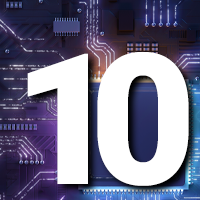 General GPU/CPU updates
General GPU/CPU updates
When it comes to 2024 CPUs and GPUs, we’ve covered high wattage, but in addition to that, expect more CPU cores and increased performance from both components. You can also expect BOXX agility to provide a faster time to market than the big name commodity PC manufacturers. For example, BOXX is among the few manufacturers offering systems powered by the latest AMD Ryzen Threadripper and Threadripper PRO processors. To help you determine the right Threadripper solution for your workflow, read this helpful Threadripper vs. Threadripper PRO comparison.
Conclusion
Each new year brings with it varying degrees of uncertainty. However, of that which you can be certain is that technology marches on and in order for you and/or your organization to remain relevant and competitive, your computer hardware must keep pace. So, as these 2024 trends gain steam, know that BOXX is where we always are—at the forefront, ensuring you have the latest and best technology (aided by expert support) to outdistance your competition.
